The best way to succeed online is to pick a niche with characteristics that are conducive to success.
Why? Because your niche dictates everything from the products you develop to how you communicate with your customers. By understanding the specific needs of a niche, you can position yourself in the market and earn more sales.
In this short guide, learn how to find your niche and what products to sell in it—plus, get tips to see if your small business ideas have sufficient demand.
What is a niche?
A niche is a segment of the broader market that has its own unique characteristics to distinguish it. Choosing a niche lets you target a more specific audience and offer products, services, and content tailored to their unique needs and problems.
For example, if your niche was indoor plants, you could create ceramic planters that appeal to customers who value craftsmanship and sustainability. You’d produce planters with unique designs, textures, and colors not found in larger retail stores to further attract buyers and build loyalty.
Why is it important to find your niche?
To succeed in business, you need to carve out a niche. Choosing a niche helps you build credibility with one audience and dominate a particular corner of the market. When you niche, you become the go-to business for a specific group of people.
Niching also:
- Helps you build brand loyalty. Customers will choose your brand over a mass market company offering more product types. They also will connect more with your niche brand, knowing it will meet their needs.
- Lowers marketing costs. By knowing your niche, you can target specific groups of customers. These people are more likely to act on your promotions, which brings down marketing and advertising costs.
- Shows expertise. Choosing a niche establishes you as a thought leader in your space, as opposed to someone providing a generic product. It also positions you as an expert, signifying credibility and building trust amongst relevant customers.
- Increases profits. Narrowing down on a niche lets you learn about specific customer groups. If you can show you’re the best brand to meet their needs, they’ll spend more with you more frequently.
Suppose you own a shoe store. You sell many types of shoes in the store. One day, in order to attract more customers, you add shirts, hats, sunglasses, and jackets to your shelves.
If someone is looking for a specific work boot or running shoe, are they going to come to you? Chances are, no.
Say you position your shoe store to be the #1 place for nurses to buy shoes. You sell durable slip-resistant shoes that offer support all day long. You spend money on ads and influencer campaigns targeting nurses. Over time, you become the go-to spot for nurse shoes and establish your place in the market.
Related article
What Is a Niche Market? 9 Examples in 2024

A niche market is a segment of a larger market with a shared identity that makes it unique. Here are nine niche market examples to explore.
How to find your niche in 6 steps
- Evaluate your passion and skills
- Find a few different potential niches
- See if there is a market
- Narrow down your niche
- Validate your niche
- Test your niche
1. Evaluate your passion and skills
Finding your niche begins with looking at your passions and skills. Some questions to ask yourself include:
- Are there any topics I’m passionate about?
- What do I excel at?
- Do I have a favorite hobby?
These are all important factors to consider when trying to find a niche.
Let’s say you have a passion for fashion and are good at styling outfits. You might enjoy creating or sourcing clothes and working with a stylist for photo shoots. You can find a niche in the fashion industry by combining these interests and skills.
Or perhaps you enjoy cooking and creating healthy recipes. You might enjoy selling cookware and writing recipes for your company’s food blog. Finding a niche in the food industry would be easier with these interests and skills.
The key is finding an area you’re passionate about and have some skills in. This will make finding a niche you enjoy working in much easier.
2. Find a few different potential niches
Once you have an idea of your passions and skills, start looking around for potential niches. In this phase, you want to build a big list of niches so you can determine demand. You’ll narrow down these niches later.
You can define a niche by:
- Price (luxury, moderate, discount)
- Levelofquality (premium, handmade, economical)
- Geographics (residents of a certain country, city, or even neighborhood)
- Demographics (gender, age, income level, education level)
- Psychographics (values, interests, attitudes)
For example, selling trail running shoes is a niche. Trail running shoes are a segment of the larger industry of footwear and the audience is runners, hikers, and nature enthusiasts, which have large communities.
There’s no single way to find a niche, but here are a few to consider:
Start with Google searches
The best way to start brainstorming is to understand what other online retailers are doing. Let’s use “vegan shoes” as a starting point. Scroll down to the Refine section, where you can search by type, style, material, and department.
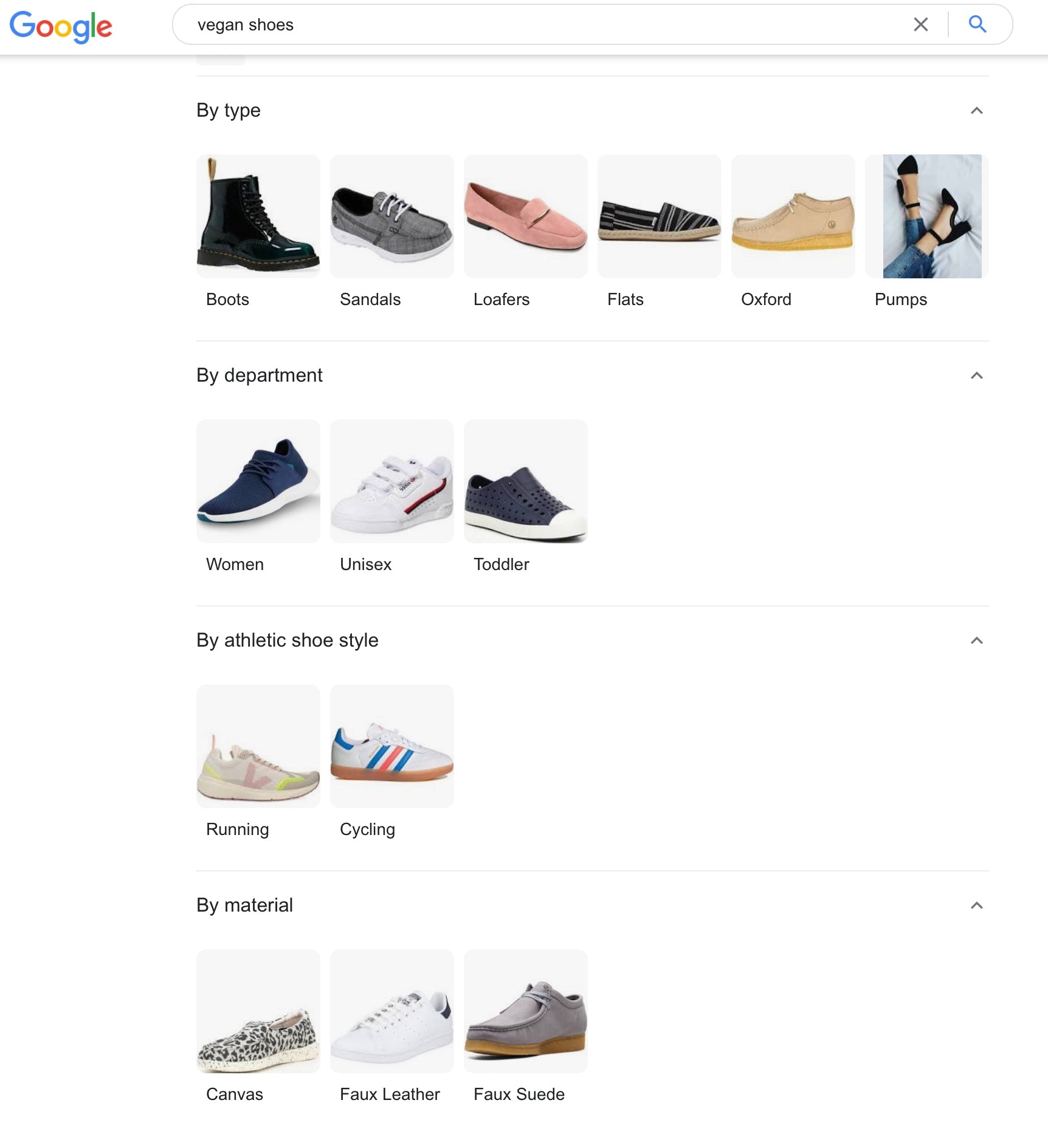
From there, you can find a goldmine of potential angles, like faux leather unisex running shoes and vegan pumps.
Dig until you find an underserved problem you feel you can provide a solution to. Keep in mind that even if you have competition, you can still compete by getting even more specific with your audience and building an effective marketing strategy.
Pay attention to your surroundings
Start looking outward to catch any common pain points. Your own experiences, as well as the experiences of others, can spark ideas.
If you’re selling shoes, you might notice both youth and elderly people have trouble tying laces. Maybe you yourself are after a certain style of shoe but no one ships to your country.
Take note of any problems like these and be the business to serve that niche population with your unique solution.
Use Google’s suggestions
Ever notice how when you start typing something into a Google search, it shows you suggestions before you finish? These are Google’s most-searched-for related keywords and queries. Use them to your advantage to find a niche for your product category. You can plug in “best shoes for” to get some ideas.
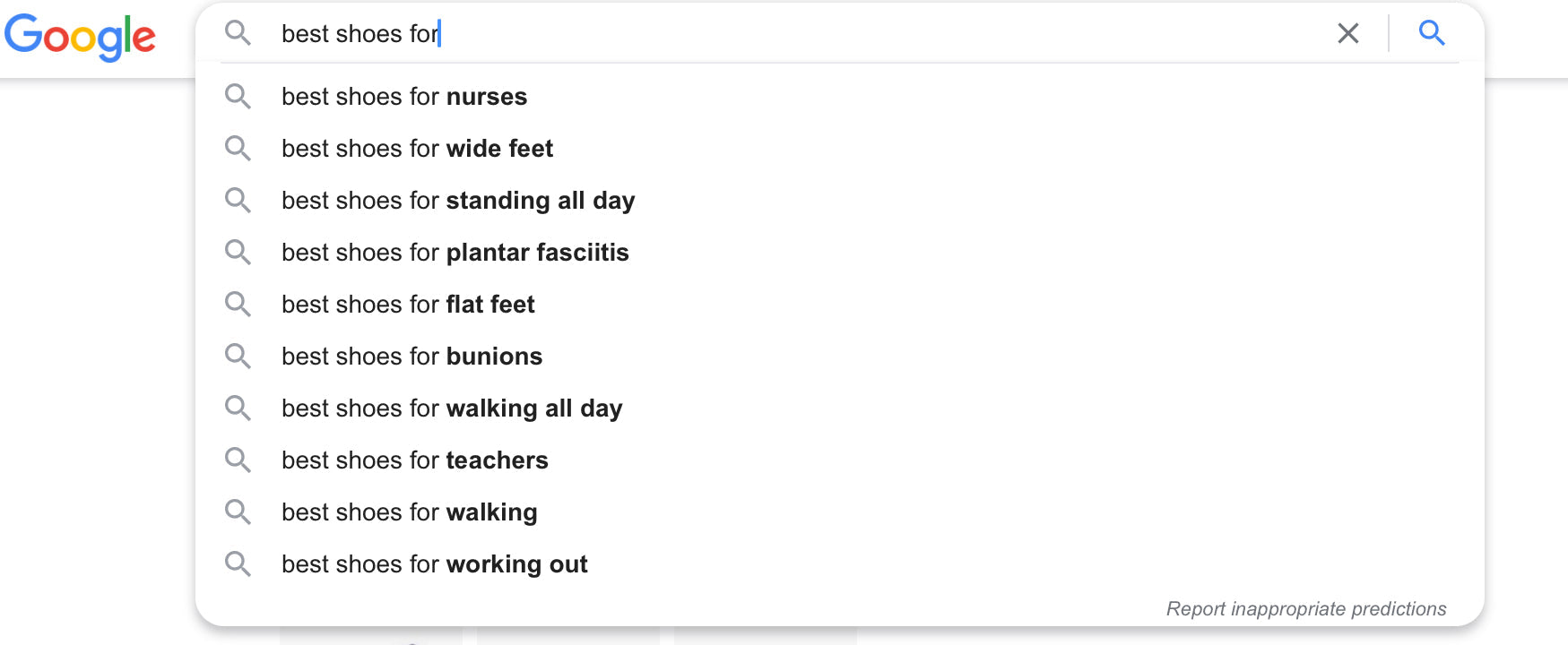
You can also use keyword research tools to check search volume and trends. This will help you identify the most viable opportunities.
Look for passionate communities online
The web is pretty good at organizing itself into communities based on shared interests, passions, and hobbies—in other words, into niches. Dig through the most active subreddit and listen in on the discussions.
Subscribe to hashtags on Instagram and TikTok, like #sneakerhead, and you’ll find opportunities to niche down.
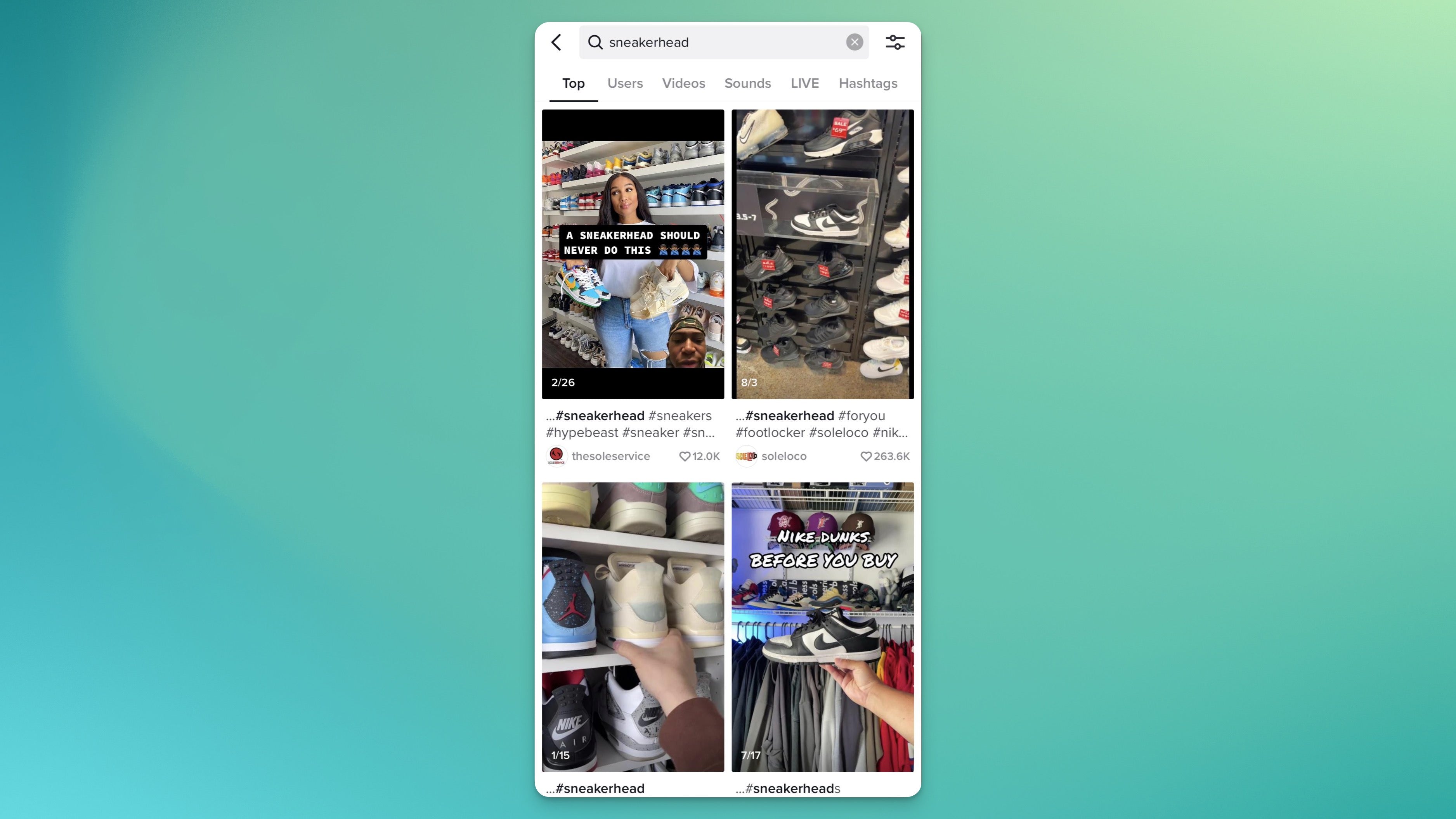
3. See if there is a market
When you’re looking for a niche, it’s important to ensure a big enough market to support it. It’s no use trying to sell to a group of people that’s too small to sustain your business.
Here are a few ways to determine if there’s a big enough market for your niche:
- Total addressable market (TAM). This is the total potential revenue that your business could generate if it captured 100% of its target market. For example, if you’re selling a product that’s aimed at women aged 18 to 35, your TAM would be the total revenue generated by all businesses that sell products to this demographic.
- Size of the niche market. This is the portion of the TAM that’s made up of your target market. For example, if you’re selling a product aimed at women aged 18 to 35, your niche market would be the TAM’s portion of this demographic.
- Growth rate of the niche market. This is the rate at which the niche market is growing. For example, if you’re selling a product aimed at women aged 18 to 35, your niche market might be growing at a rate of 5% per year.
Do market research on your chosen niches to see if it’s a good specialization or not. You can also plug each niche into Google Trends to research the current trend.
For example, you can see below that the topic “vegan shoes” has consistent demand over the past five years. This would be a decent niche to get into as a new business owner.
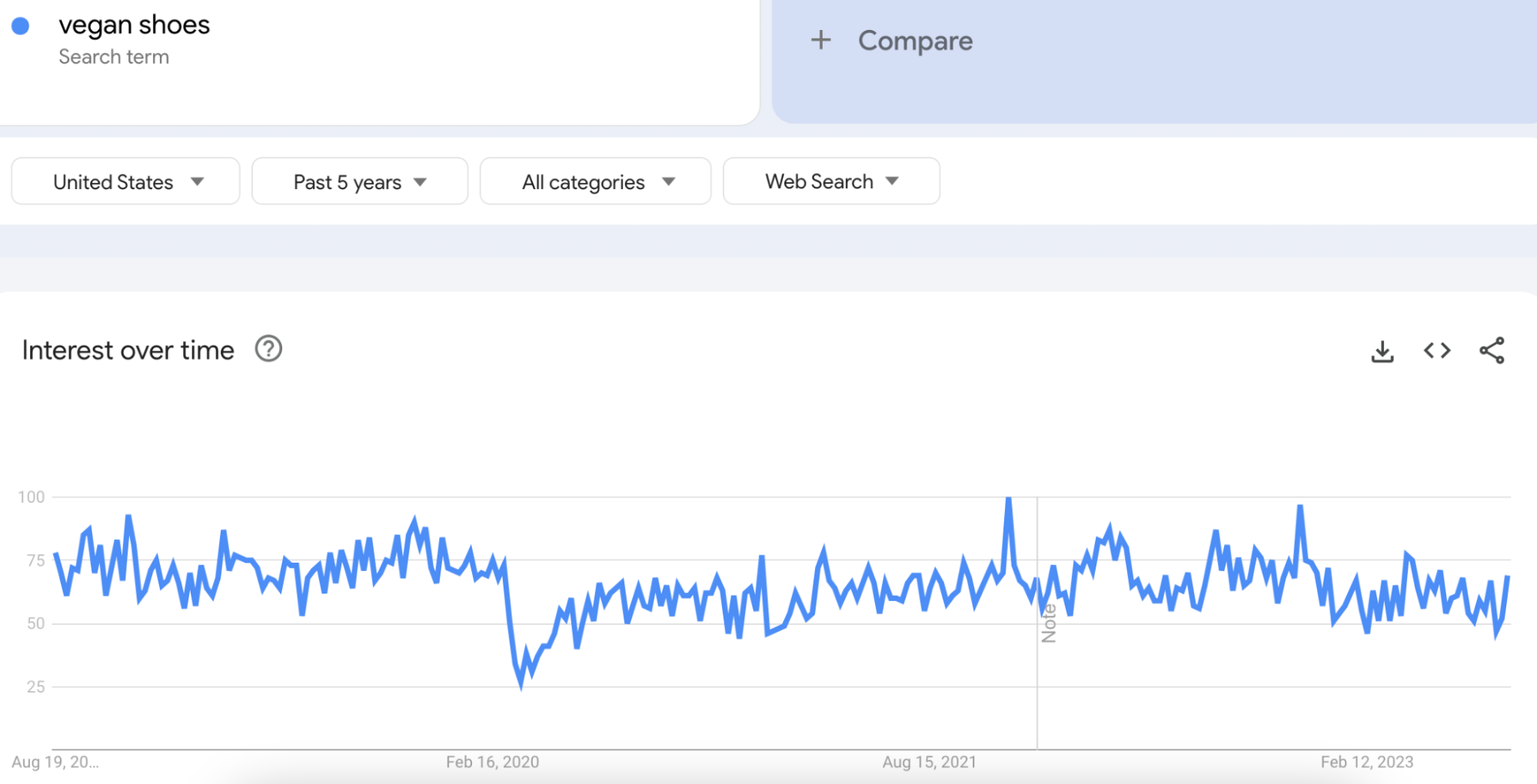
4. Narrow down your niche
Now that you’ve brainstormed a list of potential niches, it’s time to start narrowing them down. Here are a few factors to consider:
- Do you have any personal or professional experience in this niche?
- Is this niche something you’re passionate about?
- Do you have any existing connections in this niche?
- Is this niche too broad?
- Is this niche too competitive?
- Can you realistically see yourself building a successful online business in this niche?
You don’t have to check all the boxes, but the more “yes” answers you have, the better. If you’re struggling to narrow down your list, try these exercises:
- Take a closer look at the niches you’re most passionate about. What are the unique selling points (USPs) of each?
- Are there any niches on your list that you could combine? For example, if you’re passionate about fashion and sustainable living, you could focus on selling sustainable fashion.
- Are there any niches on your list that you could segment further? For example, if you want to sell fitness products, you could segment by type of fitness (e.g., CrossFit, yoga, running) or by product type (e.g., fitness apparel, fitness equipment, fitness supplements).
5. Validate your niche
There are a few key ways you can validate your niche before you invest too much time or money.
Take a look at your competition
If there are already a ton of niche businesses selling what you want to sell, that’s not necessarily a bad thing. It could mean there’s a market demand for what you’re selling.
But it also could mean you’ll have a hard time standing out in the crowd. If you do decide to enter a competitive market, you’ll need to have a unique selling proposition.
Talk to potential customers
See if potential customers would be interested in what you’re selling and if they would be willing to pay for it. You can also look for online communities related to your niche and see what kinds of conversations are taking place.
Are people talking about the problem you’re trying to solve? Are they looking for solutions? If so, that’s a good sign you’ve found a potential niche.
Build your audience first
Kickstarter campaigns generate awareness about products before they’re even developed. You can introduce your idea and gain followers before the idea has come to fruition. This way, you’ll have an engaged group of target customers ready and waiting for you when you launch.
Research consumer trends in your market
It’s important to be up to date with what’s happening in your chosen niche. Resources like Think with Google and Nielsen consumer research will help you understand consumer pain points, desires, and breakout trends.
Set up Google Alerts for related keywords and regularly monitor social media conversations to stay on top of what’s trending.
The goal is to get feedback from real people about your niche idea. This will help you validate (or invalidate) your assumptions and give you a better idea of whether or not there’s a market for what you’re selling.
6. Test your niche
Finally, you can validate a product or niche by testing it out. This can be done by starting a blog or a YouTube channel related to your niche, or by creating a landing page to sell a product or service related to your niche. If you can get people to sign up or buy what you’re selling, that’s a good sign that you’ve found a viable niche.
Niche market examples
Conscious consumers
The topic of sustainability has become increasingly important, and for good reason. Almost any mass-produced product has a niche market of conscious consumers looking for greener alternatives.
In the past, companies might have donated proceeds to a cause, but now consumers care how products are made. In other words, there’s a subculture within green living that cares about ethical supply chains. If you’re in this niche, keep that in mind.
Some product examples are:
- Bee’s Wrap that replaces Saran wrap
- Cruelty-free cosmetics
- Vegan clothing
- Menstrual cups
💡 Tip: Avoid greenwashing. Make sure your environmental claims are backed up. In this category, you can’t be perfect—that’s not how business works. Keep in mind that greenwashing will always backfire.
Pet owners
There was an estimated $143 billion in sales for the pet industry alone in the US in 2023. The market offers a lot of product opportunities across different types of pets, lifestyles, and more.
For example, Pup Socks sells personalized socks you can plaster your beloved pet’s picture on, and it has hundreds of thousands of website visitors monthly:
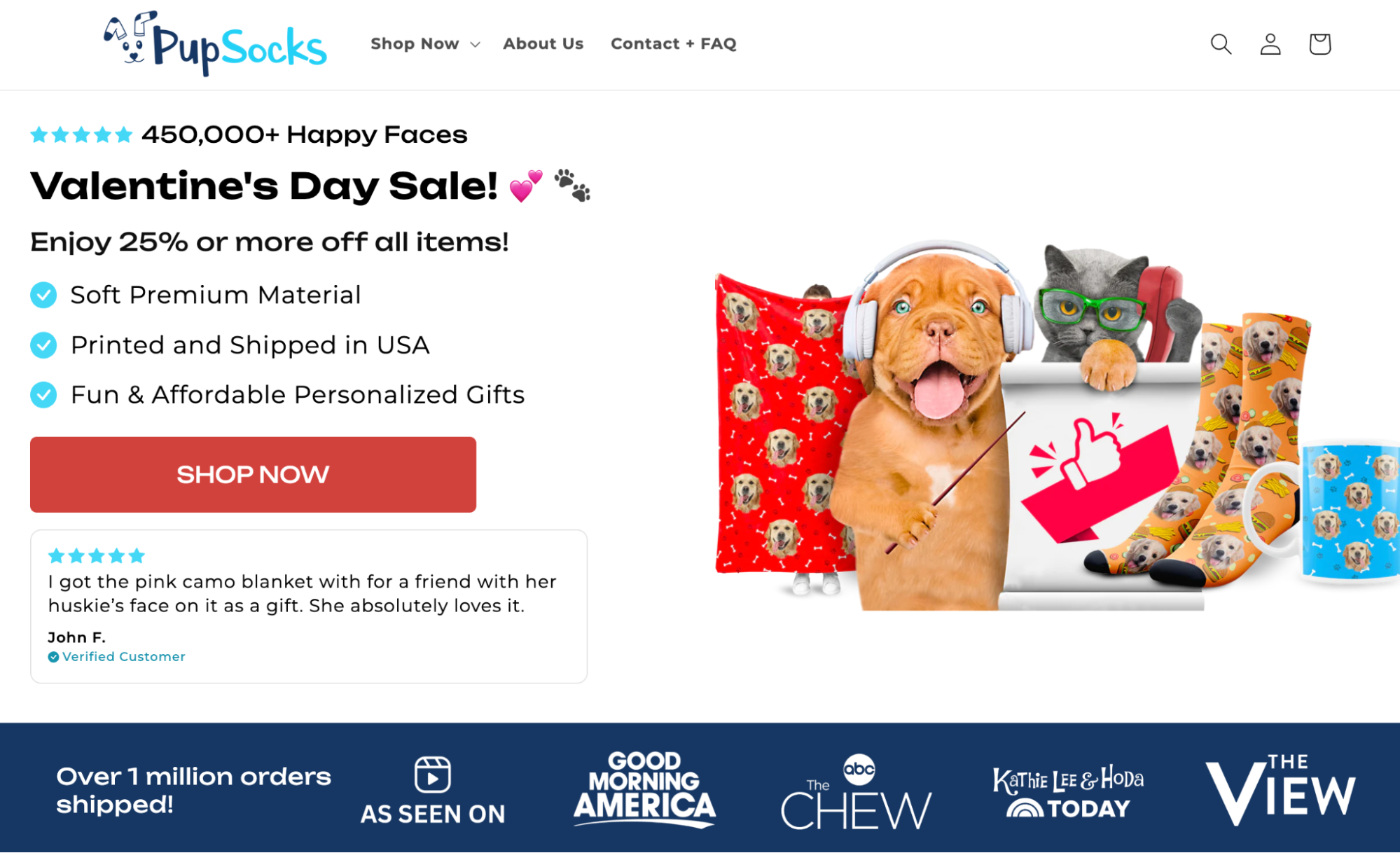
Many people own fish, dogs, or cats, but there also are unique pets, such as horses, lizards, turtles, and even chickens. You can tap into any of these niche markets.
Locals
Even the world’s biggest brands are adopting niche marketing approaches through targeted local campaigns. This is because they’re competing with a consumer-driven movement to support local businesses.
But if you’re only selling online, it can be difficult to establish a local presence. Luckily, there are ways for ecommerce sellers to appeal to locals. Peace Collective, for example, was founded around Toronto pride, with the slogan “Toronto Vs Everybody.” It has since expanded its brand to support mental health research.
If you want to sell locally you could make t-shirts with subculture slogans, images of the city, or local sports teams, or even sell souvenirs and city guides.
Read more: Start Selling in a Niche Market Today: 9 Examples
Specialized gym equipment
The fitness industry starts broad, but has so many niches available to choose from.
One example is specialized gym equipment, which can support athletes, from amateurs to professionals, in reaching their goals. For example, you might sell climbing treadmills or simulators for climbers to train indoors, or plyometric boxes for boxers looking to improve their speed.
Westside Barbell is a fitness ecommerce website that operates in this niche. The brand offers lots of products for bodybuilders, such as chalk, bars, books, and even coffee—catering to a multibillion-dollar audience ready to get in shape.
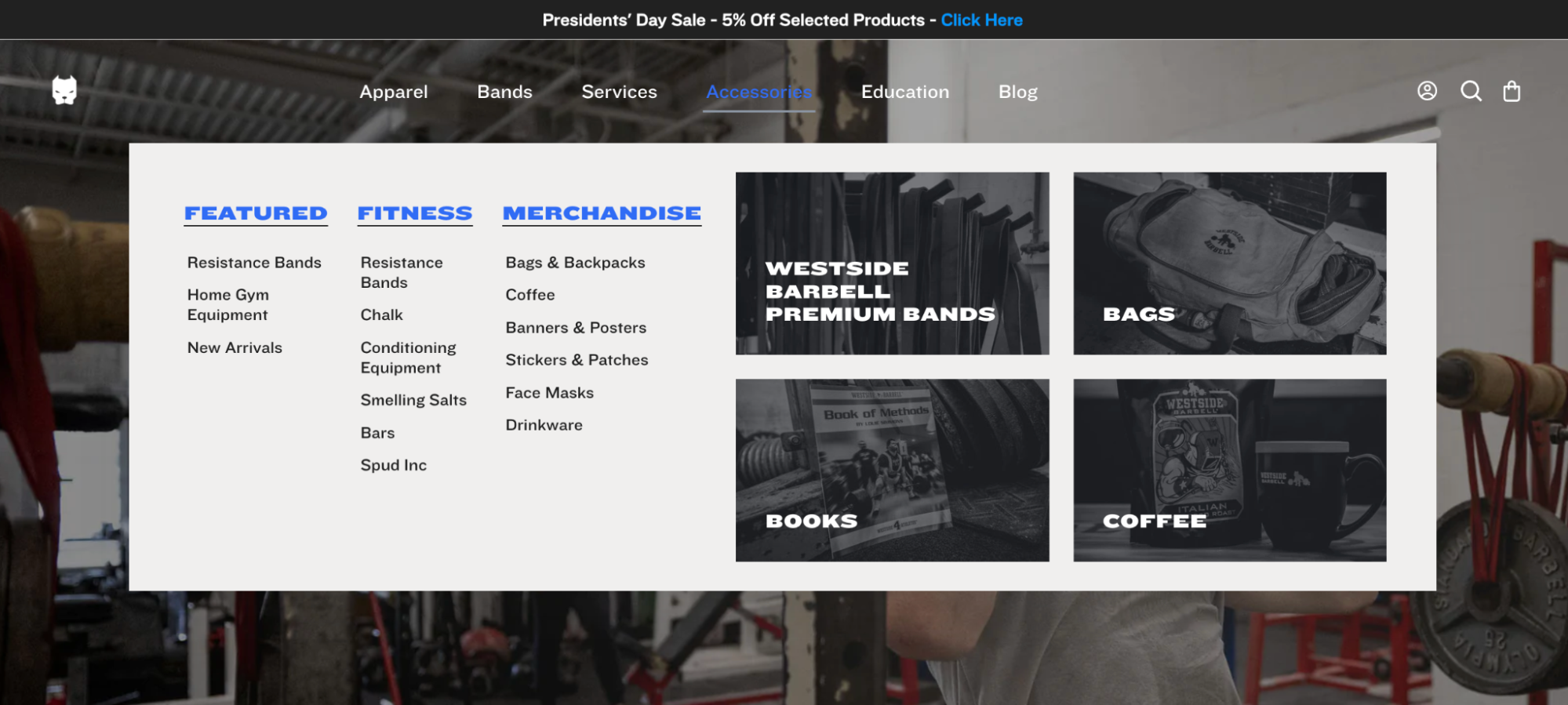
Customized stationery and writing tools
Even though the world has gone digital, there are still people who value handwritten notes and letters—enough to make up a $143 billion market. The market caters to groups like business professionals and hobbyists who appreciate the art of writing.
In this market, you can sell:
- Personalized notepads and journals
- Engraved pens
- Customized business stationery
See how Stationery Pal does it. The brand, which reportedly does between $100 million and $200 million in yearly revenue, offers a variety of products. You can find items such as highlighters, erasers, organizers, and cases. Stationery Pal is constantly rolling out new collaborations and promos to earn sales and build customer loyalty:
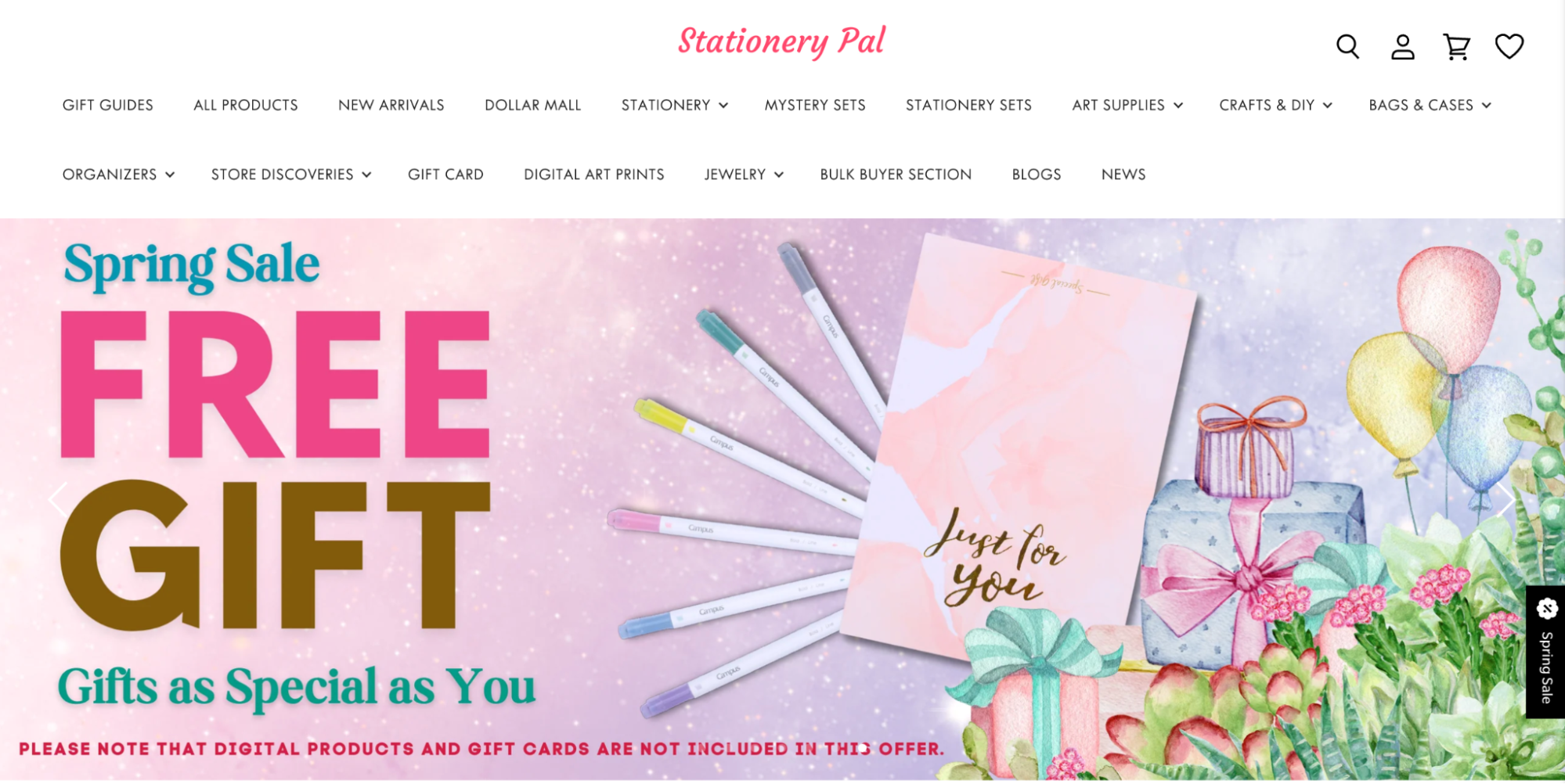
Beauty products for men
The men’s grooming and beauty market is exploding, estimated to reach a $115 billion market valuation by 2028. This growth is driven by a cultural shift toward men taking better care of their appearance and the destigmatization of men’s beauty routines.
Players in this market can cater to various men’s needs, offering products like beard care, skin care solutions, or environmentally conscious products.
There are a lot of skin care products for men out there, and Bulldog Skincare stands out in this niche. It caters to all skin types and concerns, with natural ingredients and sustainable packaging. The brand has successfully marketed itself as an easy to use, straightforward skin care brand for men:
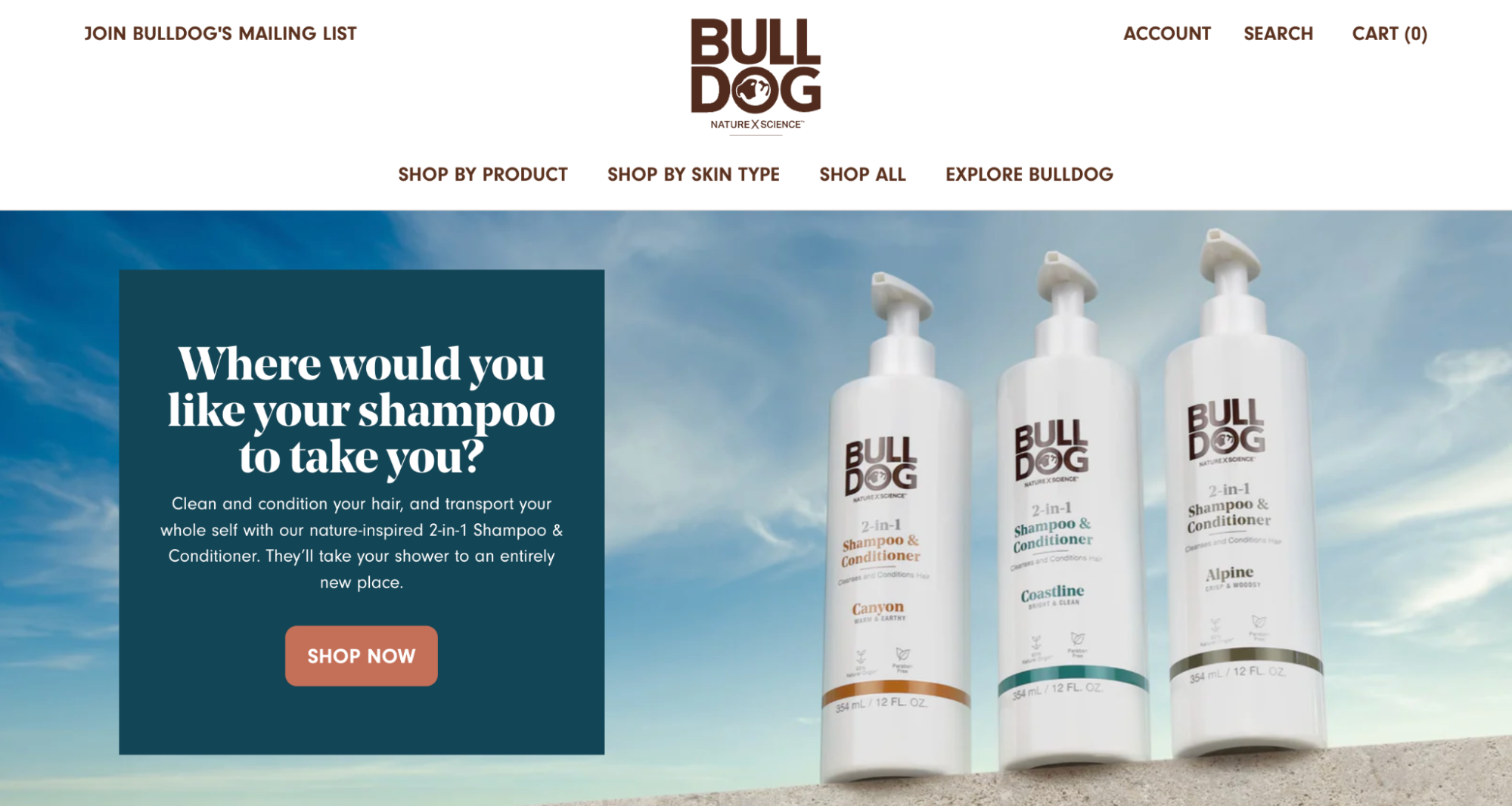
Tips for finding niche products to sell
While you’re brainstorming various niches and products to sell, there are a lot of important things to consider. Here are some ways to look for niche products to sell:
Accessory-heavy niches
Merchants rarely make much on big-ticket items and will earn only 5% to 10% on products like laptops and TVs. Where they really make their money is on the accessories.
Accessories enjoy significant markups, and customers are much less price-sensitive about them. A buyer might shop for weeks to get the best deal on a TV, but wouldn’t think twice about dropping $30 on an HDMI cable from the same place.
When you choose a niche with lots of accessories, you’ll enjoy significantly higher profit margins and fewer price-sensitive shoppers.
Customers with a passion or problem
It’s amazing how much money passionate hobbyists will spend. Mountain bikers will drop hundreds on lightweight accessories to shave a few pounds off their bike, and avid fishermen will invest tens of thousands of dollars in boats and related accessories.
Also, if you can offer a product-based solution to a painful problem, you’ll find a captive audience eager to buy.
The $100 to $200 range
This price range is an ecommerce “sweet spot.” It’s large enough to create decent average order value (AOV) and per-order profit, but small enough that—with a quality, informative website—most customers won’t need to speak with someone before the sale personally.
As you grow, generating most of your orders online offers massive efficiency savings versus a phone-heavy approach. But if you’re selling products that cost $500 or more, many customers will want personal customer service before pulling out their credit cards.
Hard to find locally
If you needed garden equipment, you’d likely head down to your local Home Depot or Lowe’s. But where would you go to buy surveillance equipment or magicians accessories? Probably online. Pick niche products that are hard to find locally and you’ll be able to get in front of the vast majority of your customers as they search online.
While you ideally want something difficult to source locally, you also need to ensure there’s ample demand for the product. This can be a fine line to walk.
Low product turnover
If your product line is constantly changing year to year, you’ll end up spending valuable time on resources that will soon be outdated. Selling a product line with limited turnover ensures you can invest in an information-rich website that will be viable for years.
Consumable or disposable products
Repeat customers are essential to any business, and it’s significantly easier to sell to existing customers who trust you than to new prospects. If your product needs to be re-ordered regularly—and you’re able to keep your customers happy—you’ll be on your way to building a profitable business with recurring revenue.
Finding a great product is only part of the equation. Even a niche fitting all the above criteria would be a poor choice in the face of inadequate demand or crushing competition. Understanding a product’s demand, competition, and suppliers is important to making an informed decision.
How to make your niche profitable
Having a niche business makes it easier to find potential customers and convince them to buy from you, but you need to be sure there are enough buyers in that niche to make it viable. Getting to profitability involves a few strategic steps to capitalize on the unique elements of your audience:
- Create a strong brand identity. Your brand must resonate with your target audience and what they stand for. Your name, logo, and market materials have to connect with customers in order to sell to them.
- Continually improve on your products and services. Your early days will be full of trial and error, and that’s a good thing. You want to learn from your audience and tailor features to solve their issues and improve product quality.
- Partner with influencers in your space. Influencer marketing is a great way to gain visibility and credibility in a niche. Use Shopify Collabs to find influencers who share your brand values and have an engaged audience that matches your target audience.
- Focus on customer experience. Do your best to provide a good customer experience to encourage referrals and repeat business. Create a website that is easy to browse. Use high quality images and video to showcase your offerings. Guarantee you are always providing the customer service, whether it’s via chatbot or human agent.
- Diversify your income. Expand the channels you sell to customers. With Shopify, you can easily sell on your own ecommerce website, at marketplaces, and in-person with the Shopify POS Go.
Niche down, make more money
Even if you do achieve success early on, niches change, so expect to evolve with your audience over time. You might even introduce more products to your line as new opportunities present themselves.
Understanding the specific needs of each business niche makes it possible to speak directly to them in your marketing efforts—you’ll have a greater chance of attracting a buyer’s attention and winning their business by making it clear that your product is specifically for them.
Read more
- How To Find a Product to Sell: 16 Proven Methods
- How To Make Your First Ecommerce Sale—Fast (Tutorial 2024)
- 8 Dropshipping Software for New Dropshippers
- Dropshipping Business Ideas- The Easiest Way to Sell Online
- Print on Demand Shirts- A Quickstart Guide
- Dropshipping Fulfillment- Guide to Supply Chain and Order Fulfillment
- The Ultimate Guide To Dropshipping (2024)
- 10 Best Providers for Print-on-Demand Books
How to find your niche FAQ
What does it mean to find your niche?
How do I find my personal niche?
- Evaluate your passion and skills.
- Find a few different potential niches.
- See if there is a market.
- Narrow down your niche.
- Validate your niche.
- Test your niche.
How do I find my career niche?
What are the most profitable niches?
- Health and personal care
- Wardrobe and accessories
- Kitchen and grocery
- Home décor and bedroom
- Office products
- Tools and home improvement
- Camera and cellphone accessories
- Gaming
- Car accessories


